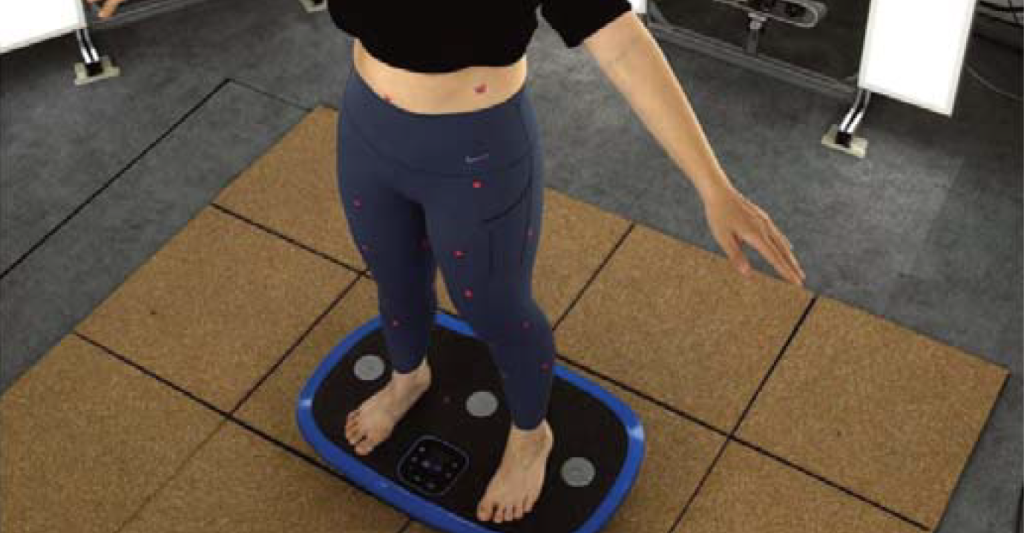Innovative Research Methodology
Under the leadership of Professor Joanne Yip, Associate Dean of the School of Fashion and Textiles at Hong Kong Polytechnic University, our research team has pioneered a novel anthropometric method that delivers highly accurate measurements to enhance the performance and design of compression-based apparel. This groundbreaking work has been published in Frontiers in Bioengineering and Biotechnology
Our innovative approach utilizes advanced image recognition algorithms to systematically assess tissue deformation while minimizing motion-related errors. We also developed a sophisticated analytical model to predict tissue deformation using the Boussinesq solution, based on elastic theory and stress function methodology.
Exceptional Precision and Clinical Validation
The precision of our methodology has been rigorously validated against body scanning measurements, demonstrating remarkable accuracy with deviations within just 1.15 mm under static conditions and 2.36 mm in dynamic conditions. This level of precision equips designers with reliable data that accurately reflects soft tissue deformation—a critical factor directly influencing garment appearance, comfort, performance, and physiological effects such as blood circulation and muscle support.
Wide-Ranging Clinical Applications
“Our technology is highly adaptable to compression-based garments, including sportswear such as leggings and functional medical wear like compression stockings and post-surgical garments,” explains Professor Yip. The analytical model can be tailored to different garment types by adjusting parameters like material mechanical properties and circumferential dimensions.
During our research validation phase, we used sports leggings with different material mechanical properties, pattern designs, and circumferential dimensions as experimental samples.
Addressing a Critical Industry Challenge
Inaccurate deformation measurements, especially during motion, often lead to ill-fitting designs that undermine functionality. Our approach tackles this issue by minimizing motion artifacts and providing a systematic framework to correlate garment pressure with tissue response, which is vital for optimizing wearables’ biomechanical efficacy.
Soft tissue deformation is a critical factor that has long posed challenges to achieving optimal garment fit and comfort, particularly in functional medical wear and sportswear. By integrating mechanical property testing with our image recognition methodology, we have created a comprehensive solution that accurately predicts tissue deformation.
Transformative Industry Impact
Our research findings offer actionable insights that link material properties to garment fit and performance. This framework not only advances biomechanical simulation techniques for wearable applications but also provides a practical tool for optimizing sportswear ergonomics, enabling data-driven design of compression garments that enhance athletic performance while preventing the risk of musculoskeletal injuries.
This technology holds promising transformative potential for the industry with feasible and cost-effective applications :
- Our method can be integrated into existing CAD/CAM systems to streamline prototyping and reduce reliance on trial-and-error fitting.
- By quantifying individual tissue response, this technique supports personalized garment design, particularly beneficial for medical compression wear tailored to specific patient needs.
- The image-based tools can reduce dependence on expensive motion-capture systems, making the approach accessible for small and medium-sized enterprises.
Commitment to Innovation
This research exemplifies our team’s commitment to developing innovative solutions that bridge the gap between wearable technology, personalized therapy, and future healthcare—core values that drive the Medical Textiles and Functional Clothing research center.
By providing designers with accurate, reliable data on soft tissue behavior, we are enabling the next generation of compression-based medical garments that truly meet the needs of patients and healthcare providers.
For more information, please contact:
Professor Joanne Yip
Associate Dean, School of Fashion and Textiles
Hong Kong Polytechnic University
Tel: +852 2766 4848
Email: [email protected]

